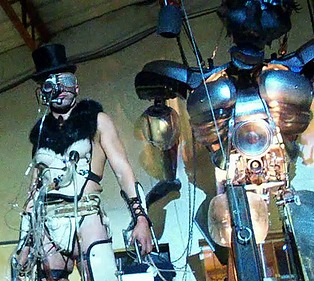A new scientific development conjures up sci-fi images of Rutger Hauer’s android in Blade Runner – lab-cultured eyes, brain parts, and glands. Yet that is exactly what researchers at Kobe's Riken Center for Developmental Biology have achieved.
Yoshiki Sasai and his team at Riken's Organogenesis and Neurogenesis Group have developed a neoteric cell culture technique for growing embryonic stem cells in fluid 3-D assemblages. Their latest report revealed that embryonic stem (ES) cells grown under certain conditions can self-organize themselves into a partial pituitary gland that is functional when transferred into mice. After using this technology to grow mouse ES cells they matched the culture environment to mimic the chemical environment that promulgates the anterior pituitary.
This development requires interactions between two tissues: the oral ectoderm, and the hypothalamic neuroectoderm, the latter generating the more familiar hypothalamus. The ensuing interaction causes a region of the oral ectoderm to fold in on itself, and then detach, forming a sac called Rathke's pouch. Continuing to differentiate, cells within the pouch go on to produce six different types of hormone-producing cells found in the mature anterior pituitary. By direction of the hypothalamus, each cell manufactures a varying hormone. Streaming into the blood, these hormones can regulate blood pressure, growth, sex organ function, and metabolism.
When grown in 3-D cultures and treated with the correct signaling molecules, Riken's ES cells mirrored this process. "ES cells produced both oral ectoderm and hypothalamic tissues in 3D culture," commented Sasai. "When both are induced together, they spontaneously form layers back to back by self-organization. When they are in contact, signals from hypothalamic tissues act on oral ectoderm to induce Rathke's pouch. It takes about two weeks to develop Rathke's pouch and a total of three weeks for the hormone-producing pituitary."
Transplants were made by the researchers into mice whose pituitary glands had been surgically removed. Typically, the resultant hormone deficiency from this removal would cause the hapless creature to expire within two months from the surgery; yet, by restoring the hormones to their optimal levels, the lab-grown pituitaries rescued the subjugated mice. Though scientifically Promethean, these lab techs must not have felt much affinity for the children's tale The Rats of Nimh.
These ES cells grown in 3D cultures can also recapitulate the earliest stages of neural development, self-organizing into functional brain tissue, tissue which formulated into existing neural circuits when transplanted into the brains of infant mice – the cells can even generate embryonic eyes. Growing entirely functional organs is the apex of regenerative medicine, and Sasai's team is leading the way. These advancements hold magnanimous possibilities for the treatment of spino-cerebellar ataxias, Parkinson's Disease, and other neural disorders and deficiencies. There could even be shining hope for those of us who severed the dendrite chords of too many neural networks with the lance of alcohol in our twenties.
Image by Abode of Chaos on Flickr courtesy of Creative Commons Licensing















